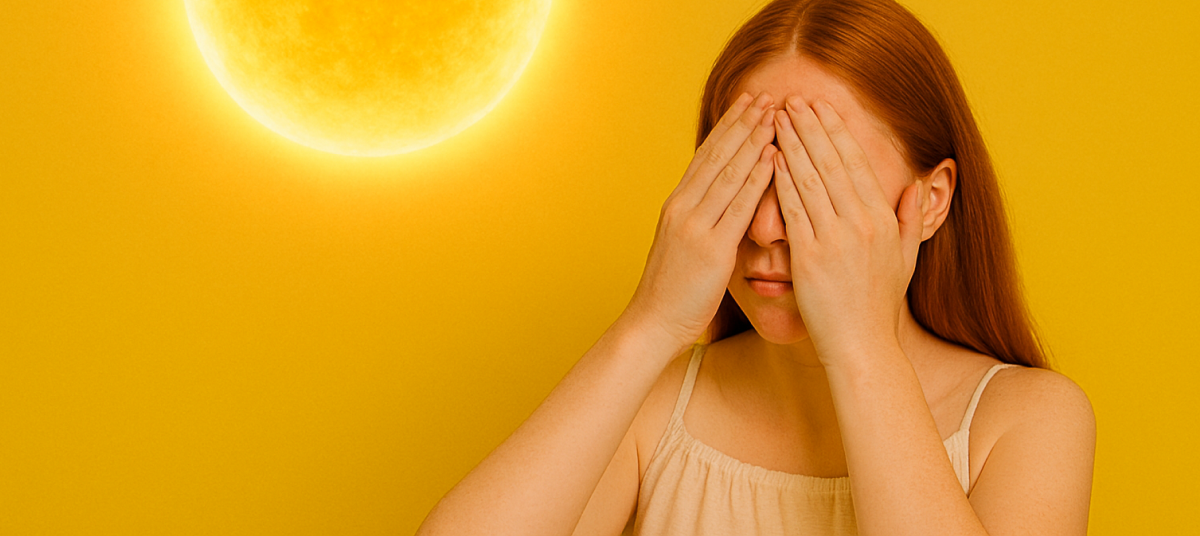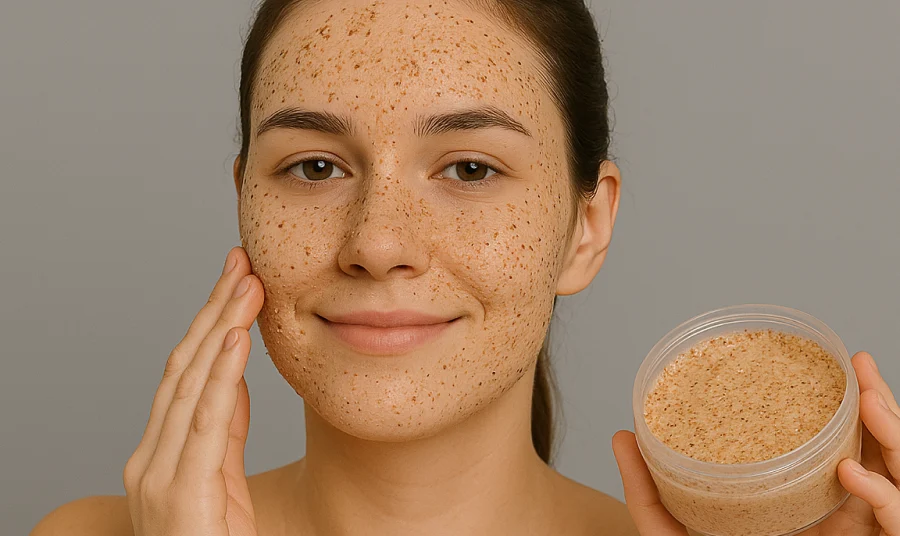What exactly is photosensitivity, why does it happen, and how can you protect yourself?

Photosensitivity: What It Is and How to Avoid a Reaction in the First Warm Days
The first warm days have finally arrived — it should feel like a joyful hint of summer. But instead of enjoying the sunshine, you’re struggling: redness, rashes, spots, swelling, itching…
Chances are, you’re dealing with photosensitivity.
What is it, why does it happen — and how can you protect your skin? Let’s break it down.
What is photosensitivity?
Photosensitivity (or photosensitization) is a skin reaction to ultraviolet (UV) radiation. It shows up as increased irritation or even inflammation. In simple terms, your skin becomes overly sensitive to the sun — even when it’s not at its peak, like in August.
What does it look like?
- Redness that doesn’t go away quickly
- Itching, burning, or general irritation
- Dryness or flaking
- A rash that looks like an allergic reaction
- Dark spots appearing after sun exposure
- In some cases — swelling or blisters
Why does it often happen in spring?
- Skin isn’t UV-ready yet. After winter, your skin is thinner, drier, and less resilient, making it more vulnerable to the sun.
- Active ingredients in skincare. Retinol, acids (AHA, BHA), vitamin C, essential oils — these can increase light sensitivity. Even natural extracts, like citrus, can trigger a reaction.
- Medications. Antibiotics, hormonal treatments, and some painkillers can cause photosensitization.
- The combo: actives + sun. For example, you apply a retinol product at night, then go out in the morning with no SPF. The result? Pigmentation or irritation.
How to avoid photosensitivity
1. Daily SPF — no matter the weather or location
- Use SPF 30 at minimum, SPF 50 is even better
- Reapply every 2–3 hours if you’re outside
- Don’t forget areas like the neck, cheekbones, and ears — they’re just as exposed
2. Monitor your active ingredients
- If you use acids, retinol, or vitamin C — SPF in your morning routine is non-negotiable
- You can reduce how often you use these actives in early spring
- Add antioxidants like ferulic acid or vitamin E — they help your skin handle oxidative stress
3. Wear protective clothing and accessories
- Sunglasses aren’t just for style — they also help prevent pigmentation
- A hat or baseball cap shields your face and scalp
- Swap sleeveless tops for light long-sleeved shirts if you’ll be in the sun for a while
4. Go easy on perfume before heading out
- Some fragrance ingredients (especially citrus) can cause photodermatitis if applied to exposed skin
What to do if your skin has reacted?
- Cool the skin and apply calming ingredients like panthenol, aloe, centella, or thermal water
- Avoid sun exposure until the skin is fully healed
- Skip actives for a few days — give your skin time to recover
- If you see blisters, intense itching, or pigmentation — consult a dermatologist
Photosensitivity isn’t just a “fair skin problem.” It’s a natural skin response to internal or external changes that aren’t always visible. Your best defense? Daily SPF and paying attention to your skincare.
Because those first sun rays should feel amazing — and even better when your skin’s happy too.



Leave a Comment